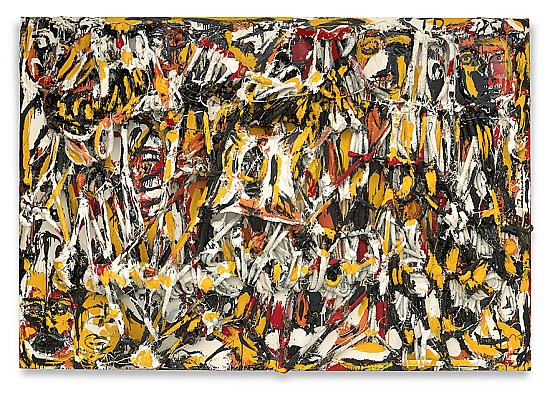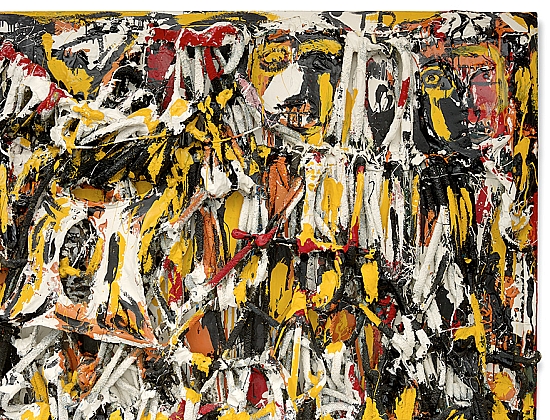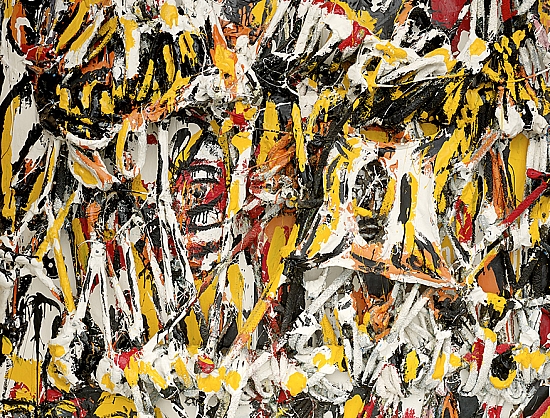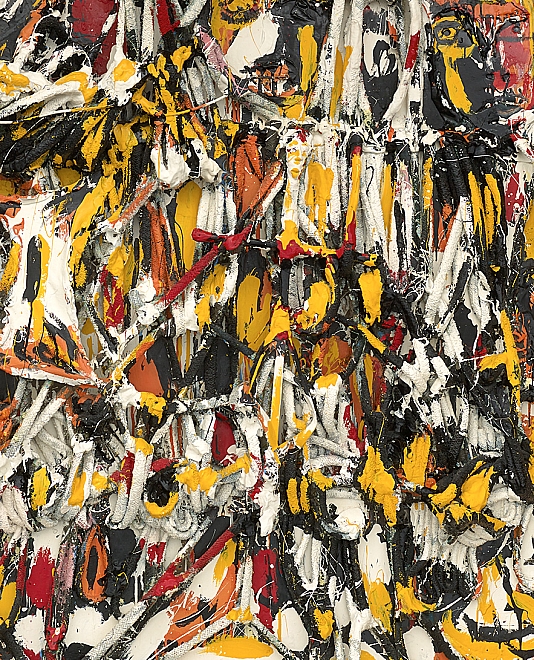One of the first works by Dial to explore the abject is his painting Blood and Meat: Survival for the World, from 1992. Seething with anguish and fury, the piece is about the assassinations of Martin Luther King, Jr., and John F. Kennedy, whose vague likenesses peer out from a mass of tightly knotted and paint-encrusted rope that resembles ruptured veins and bursting viscera. As Amiri Baraka described, “The work is itself monstrous, vicious, full of conspiracies and convections. . . . Expositions of colliding bloody violence. The meat of Kennedy’s head blown loose, like democracy. . . . A moiling, twisting, screaming whirlwind of exploded flesh and ideal. The piece can actually ‘spook’ you.”
Discussing the imagery of this work, Dial cited the story of Emmett Till, the fourteen-year-old boy who was tortured and murdered in 1955 by white supremacists in Mississippi after reportedly whistling at a white woman. Till’s grieving mother released the photograph of his bloated and mangled corpse so that all could see the brutality of the racist violence that had killed him. The image, which appeared most notably in Jet magazine, stirred a strong public reaction and fueled the cause of the burgeoning civil rights movement. Mamie Till Mobley also insisted on a public funeral with an open casket, famously asserting, “Let the world see what I’ve seen.” —Joanne Cubbs



